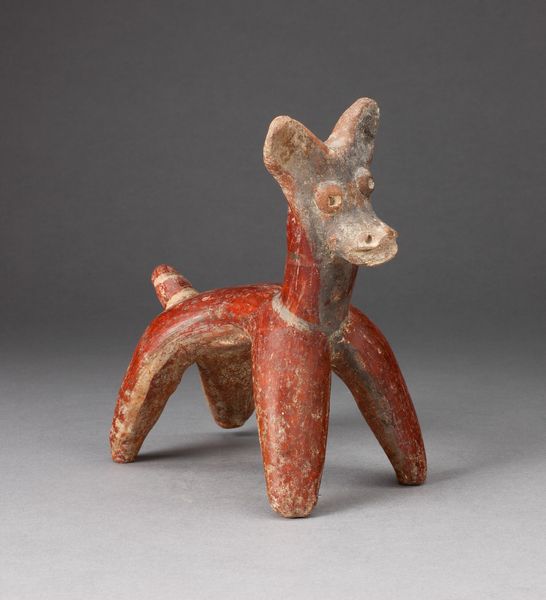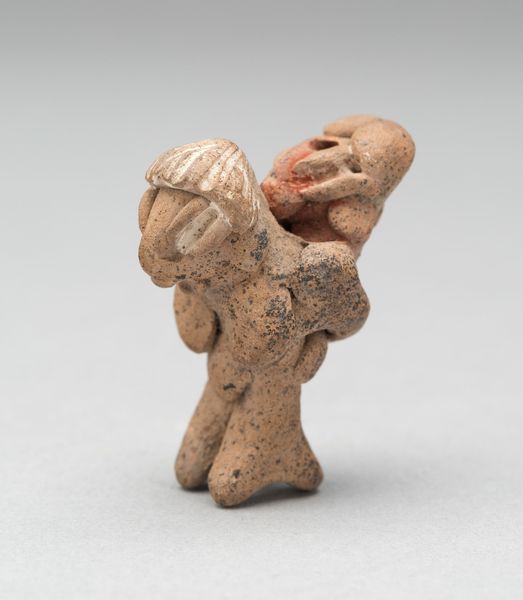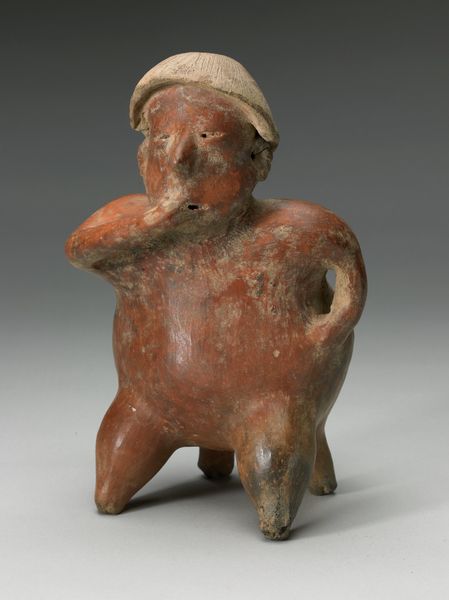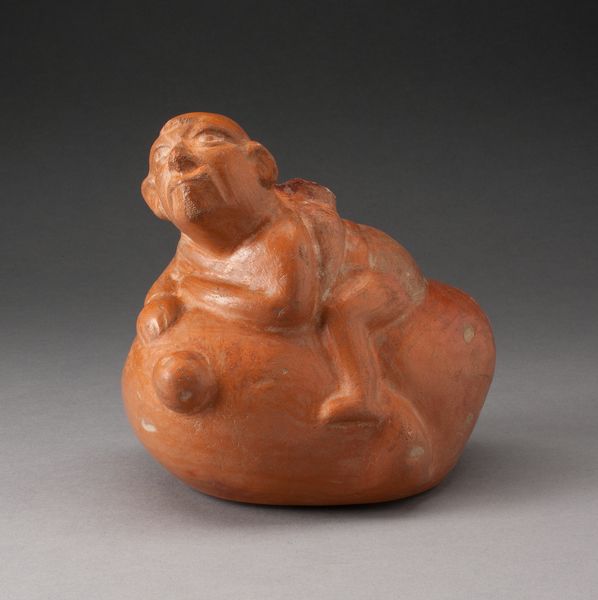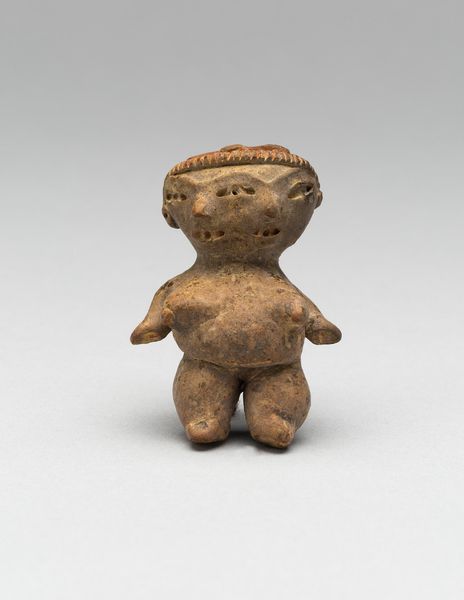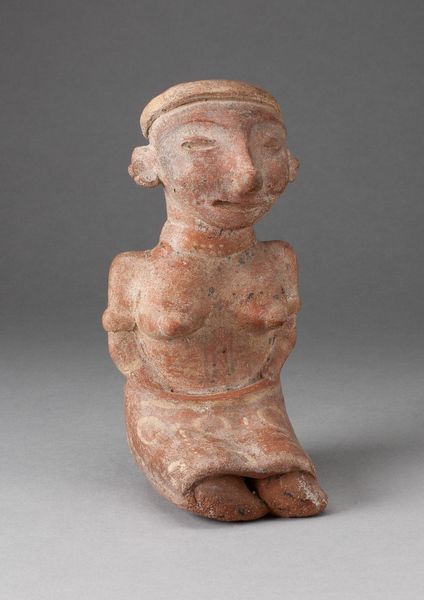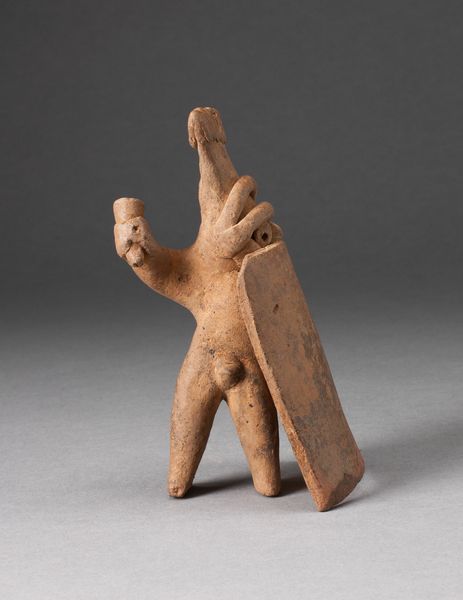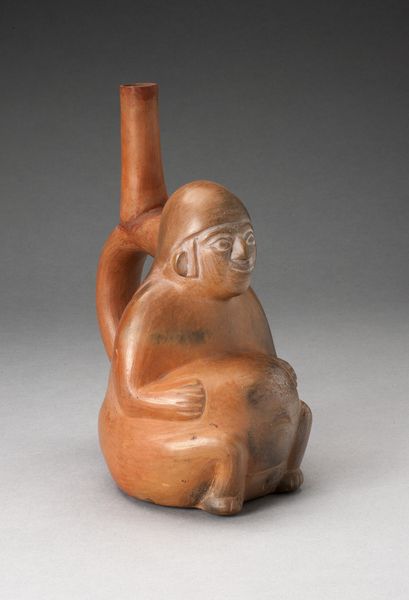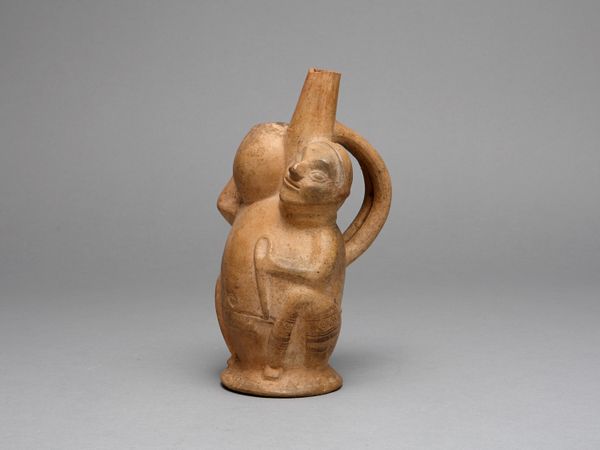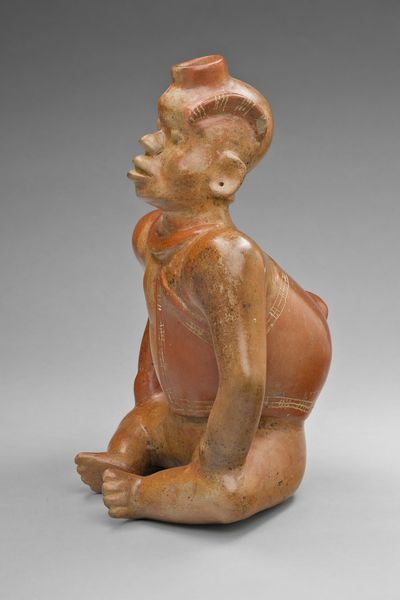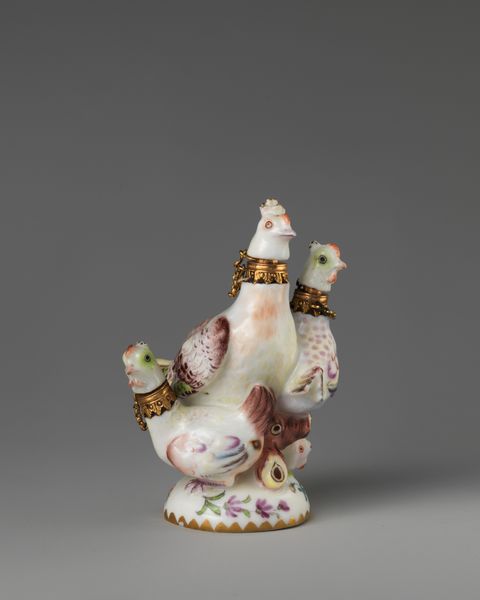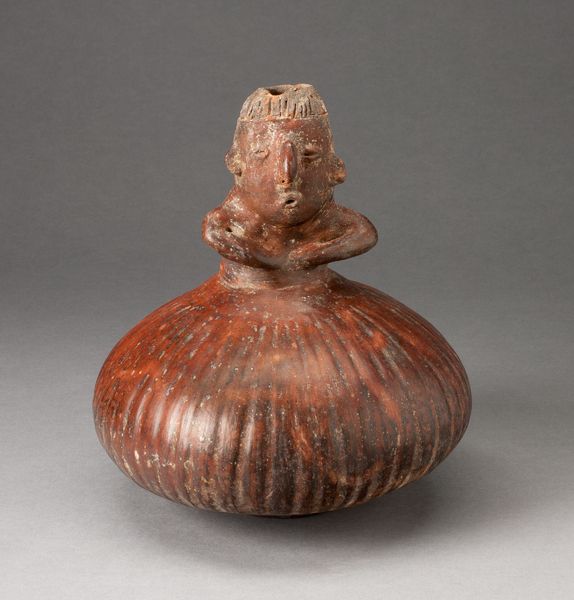
Miniature Seated Figurine with Arms Held Behind the Head c. 100 - 300
0:00
0:00
ceramic, sculpture, terracotta
#
ceramic
#
figuration
#
sculpture
#
terracotta
#
miniature
#
indigenous-americas
Dimensions: H. 8.9 cm (3 1/2 in.)
Copyright: Public Domain
Curator: This small-scale terracotta figure from ancient Nayarit, dating from about 100 to 300 CE, presents a seated individual with arms behind the head, almost as if in contemplation, and I think it gives off this wonderfully quizzical mood. Editor: It’s endearing, right? This vibrant, sort of faded brick-red pigment… combined with the scale… the tiny hands pressed against the back of the head. The posture really invites interpretation—surrender, deep thought, maybe even whimsy? Curator: Indeed. Consider that the Nayarit people, living in present-day Mexico, had a very sophisticated understanding of ceramic production. The act of extracting clay, the specific firing processes employed—all point to intricate social labor and the value of these objects beyond mere utility. It's also considered miniature! Editor: The miniature aspect is compelling. It's like a little world captured. I can imagine someone holding it, whispering secrets, connecting with something larger than themselves. Maybe this posture, arms behind the head, isn't just surrender, but receiving? Or trying to catch something elusive in the air. I wonder if, the figurine being ceramic, does its fragility impact the way that ancient civilizations were connected to death, to memory? Curator: That's astute. While this piece’s precise function remains elusive, what it tells us about material culture—the way resources were allocated, skills were passed down—those aspects are, for me, incredibly illuminating when we are exploring how culture expresses and values life through materials. Editor: Agreed! Thinking about the making is crucial—the hand, the fire—but also that impulse to externalize inner experience. The artist molded this posture not just to reflect someone's external shape, but to hint at an internal state, a secret language we are still trying to decode. Curator: Absolutely, the intersection of material understanding and evocative form is what makes encounters with works like this, even across centuries, continually inspiring. Editor: A little terra cotta puzzle—both tactile and wonderfully, humanly unknowable. Makes me smile, and wonder what mysteries the earth still holds.
Comments
No comments
Be the first to comment and join the conversation on the ultimate creative platform.
